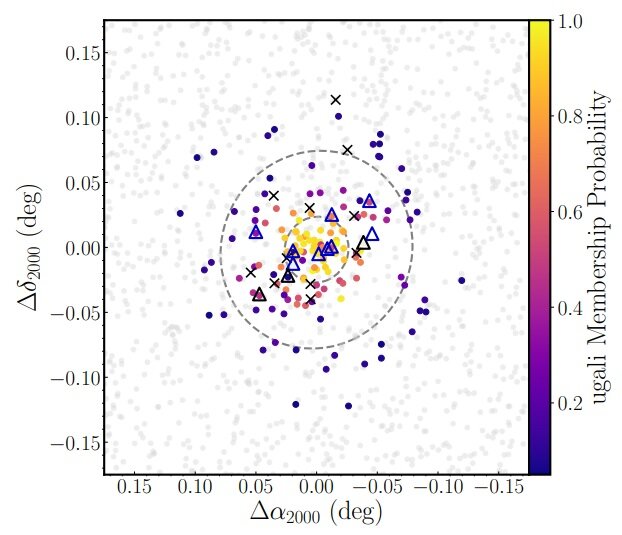
One of the more annoying kinds of systems out there is the ultra-faint dwarf galaxy. These systems are bound together by a proportionally large amount of dark matter that contains wisps of stars and gas that are just hard to see. They contain so little material capable of forming stars that they have had very few generations of stars and are essentially fossilized in a metal-poor state. This atomic simplicity makes them particularly interesting as they can help us understand the chemical evolution of galaxies early in the universe.
But to use them you have to find them, and they like to hide. They are so hard to find that we are still finding them in the outskirts of our Milky Way.
In a new paper appearing on arxiv.org and led by W. Cerny, a team highlights a newly found, ultra-faint dwarf named Pegasus IV that is right there, shining faintly, in the fall and winter sky. Located just 293,000 light-years away, this dwarf galaxy has about 4,400 solar masses of stars with ages of up to at least 12.5 billion years. This is a small, old system that is close enough for us to see individual stars.
And this won’t be the last system like this we are likely to find. With each new telescope survey, we can expect to find a few more of these systems waiting to have their member stars teased out of the background of our galaxy’s light.
One of the awesome things about dwarf galaxies is that, for the more luminous ones, you can actually image them with larger off-the-shelf telescopes and play “do you see the galaxy?” with friends. They are nothing more than areas with a few more stars, and it is amazing to realize these systems have entirely their own history.
More Information
Astronomers discover a new ultra-faint dwarf galaxy (Phys.org)
“Pegasus IV: Discovery and Spectroscopic Confirmation of an Ultra-Faint Dwarf Galaxy in the Constellation Pegasus,” W. Cerny et al., submitted to AAS journals (preprint on arxiv.org)




 Join the Crew!
Join the Crew!
 Escape Velocity Space News
Escape Velocity Space News
0 Comments